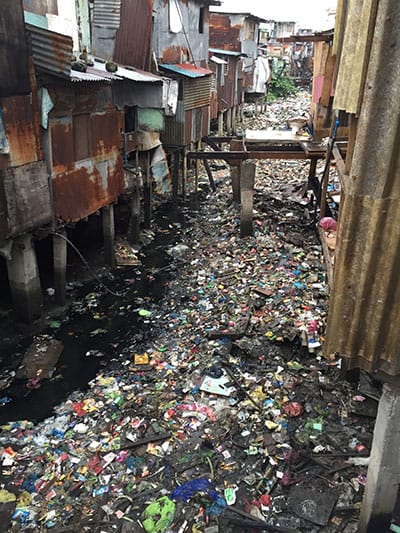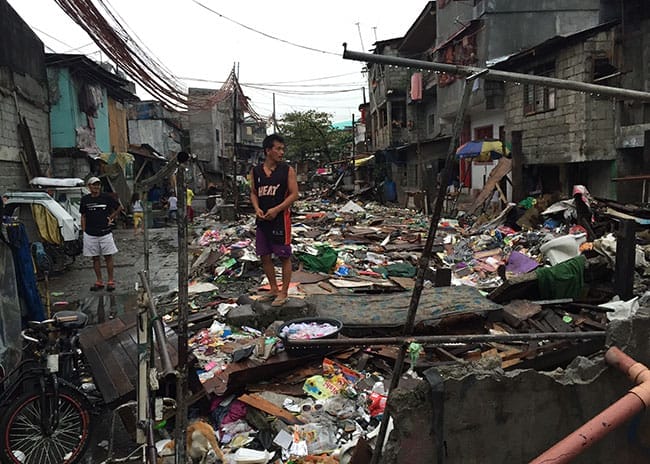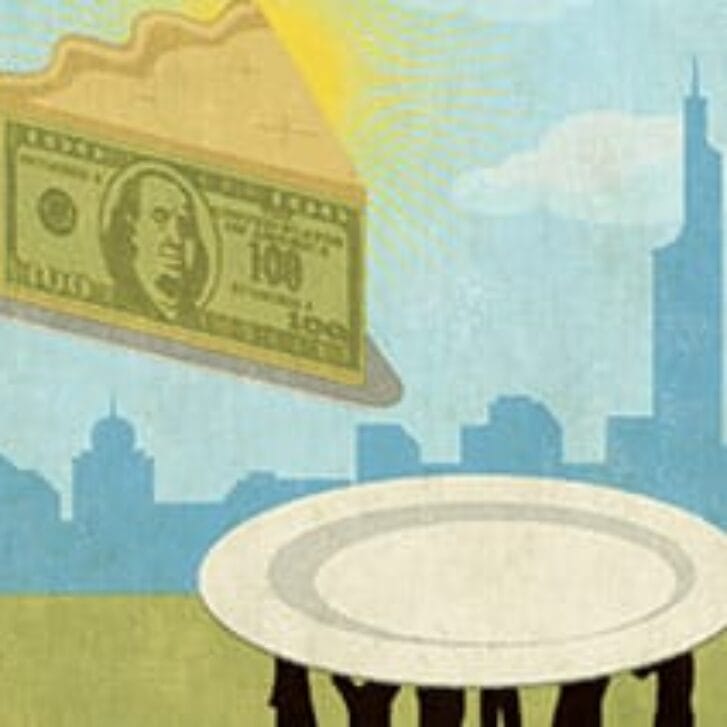You may have read recent reports about the University of Georgia’s Jenna Jambeck and team, who estimated the amount of plastic waste that makes its way to the ocean every year. If not, that number is roughly 8 million tons per year.
What does this mean to you and me?
It is the same as placing five garbage bags of trash on every foot of the 217,000 miles of coastline on our planet. This is just plastic, but to put the World Bank’s estimates of global municipal solid waste (MSW) production into perspective, it would be like covering all of California in 10 yards-deep of waste each year.
The scarier fact is that some predict the 8 million total will double within 15 years as populations growth and consumption takes its toll on our resources.
So— it is worth asking— is our waste footprint a bigger concern than climate change?
In the scheme of long-term impacts, it is hard to say, but what is evident is that most of our communities lack the waste management and recycling infrastructure needed to keep waste from creating environmental problems. Unlike climate change, which impacts certain locations at certain times, waste impacts billions of people daily, and it is right under our noses. But because it is both “nonsexy” in terms of the technologies and remediation options and because the engrained modus operandi of waste treatment in many countries is operated by the “old guard” haulers and landfill operators, it has proven hard to close the gap between our consumption “outflows” and our ability to channel that trash for improved societies—through job creation, innovation, cleaner water and better tourism.
Waste impacts all of our societies. In some ways, it is the vector that we all can and should be using to correct some of our bigger environmental ills. Why? Because trash is something that everyone can see, feel, touch and do something about. If someone says they reduced carbon output by 10 percent, children can’t see that impact and adults can’t judge it. With plastic in particular, the hardest of the MSW streams to create scale for, people know that it naturally should not be in the environment. Worse is that, many times, there is a brand name associated with that trash. Of course, the companies did not put the trash there, but to an increasingly agitated public, that brand name now represents negative impact for those who are trying to make their communities a better place.

The amount of plastic waste polluting our communities and waterways may double in 15 years, although there appears to already be plenty.
The onus of putting waste in the right place isn’t entirely the public’s. In many places, the education system neither gives the knowledge needed for proper recycling and waste management nor do the city operations have the capacity to take care of the afterlife of so many of the materials we discard. The result is a direct threat to our water systems. Over a billion people rely on protein from the sea every day for nutrition; yet many are fishing in coastal zones degraded by pollution. Improperly discarded trash can lead to diseases, reduce tourism, affect agriculture and raise the risk of flooding.
These are all problems that can be solved with the right systems. Even children can grasp these issues and can also become part of the solution. When these systems improve, it is then possible to engage that community on other more complex issues, such as those related to climate change.
A good analogy is the “broken window” theory for poor neighborhoods. It states that maintaining and monitoring our communities, while fixing all of the broken windows, helps create an atmosphere of order and lawfulness—in this case, preventing more trash. If you can clean up the waste, you create a sense of pride, leading to the likelihood of people doing the right thing in terms of recycling and disposal. If we can get our heads around creating economies of scale for plastic waste, with the help of the companies that are involved in distributing the material in the first place, all kinds of positive results will happen. This means creating bring-back programs, using reverse supply chains to recapture some of the material, injecting more recycled content into products and being part of the “design-for-recycling” economy. If we do these things, we will see a strong social uplifting, which is what is needed in many parts of the world. By creating this beneficial cycle, the steps to addressing harder environmental issues become easier to comprehend. The harder questions reach a level of achievability previously out of psychological reach.
Unfortunately, waste is a “forgotten” resource. By dismissing the value that different waste streams can create, we end up inadvertently adding to climate change ills. Organic waste causes methane, for instance, which is 23 times more harmful to our atmosphere than carbon dioxide. There are all kinds of technologies that can make use of organic waste these days, but when organics are mixed with plastic, the aggregated waste (plastics and organics) becomes virtually worthless, unless a high-tech sorting facility or incinerator is used for energy recovery. Not everyone has these technologies.
Let’s instead focus on getting our heads around plastic as a valuable feedstock, a supply of material that can be recycled or repurposed, while creating jobs along the away. Then business models for solutions will change. With the help of companies, governments and other institutions creating financially sustainable volumes brought about by scale, we can channel these resources back into use. This will help keep the organic material in a more pure, usable form, allowing composting or gasification for energy and avoiding methane creation from rotting waste. Virtually everyone wins in this cycle. There are no natural enemies for waste, but we have not changed our collective mindsets to harness the opportunities for improvement. If we do, we can springboard to the next level of climate-related challenges that may be approaching.


























